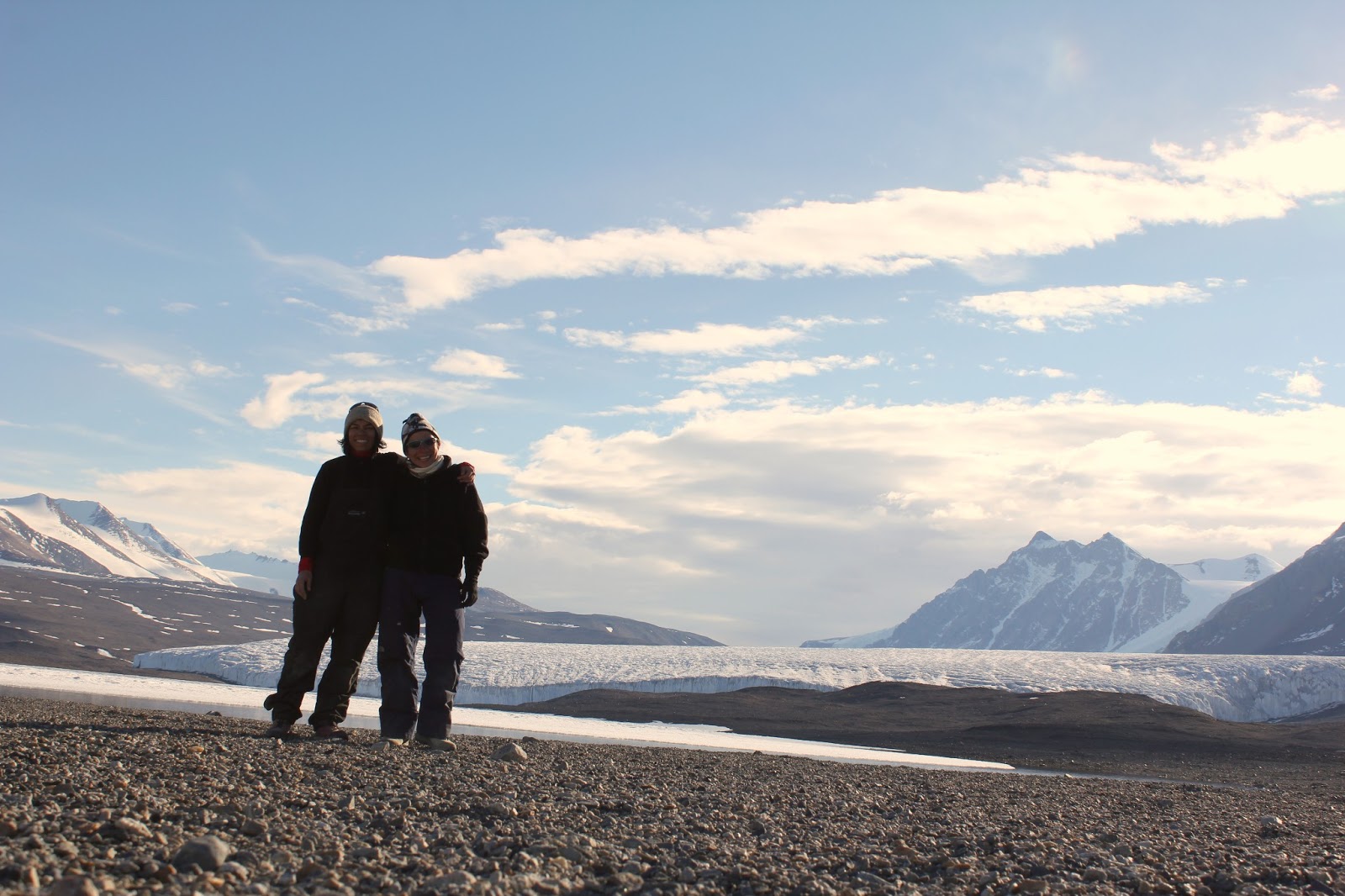This was a day trip to Lake Frxyell one of the "warmer" and "wetter" Dry valleys that I will be looking at to compare with the colder and drier, higher elevation Dry Valleys.
View of Lake Frxyell flying in on helicopter (for scale, those small yellow things are Scott tents)
It was a two person team, and I got my first taste of coring through ice-cemented permafrost. As an exercise for the kids doing the remote drilling with the Icebreaker drill (and you can try this too!), Margarita likes to tell them to try pouring some water in a tupperware container full of soil and freezing it, and then to try scooping out the soil. You can't, this ground is called ice-cemented ground, because it is about as hard as cement. Coring through cement is no easy task, but we got the samples we needed to do the science (after about three attempts, since we kept encountering large frozen rocks with depth in our holes).
Our two woman drill team!
I was also able to take soil gas measurements, to measure any microbial respiration that could be taking place in the soil, even at sub-zero temperatures. I was measuring the rate of methane and carbon dioxide flux from the soils, to try to determine if the microbial populations are alive and active in these cold and dry conditions, or if they are dormant and just frozen in the soil.
Taking soil respiration measurements in the Dry Valleys
I was able to collect samples and observe some life in this valley, in the form of endoliths . I saw cryptoendoliths (crypto= hidden, endo= within, lith= rocks) and hypoliths (life under rocks). I saw little patches of green under translucent rocks when I lifted them up, and some cracked open rocks had a line of green a few millimetres below the surface. Even though the conditions are very dry, cold and harsh for life, rocks provide a niche that microbial life can thrive in. A little bit of moisture is trapped within and underneath the rocks, providing liquid water for life. Light can penetrate through certain kinds of rock, and so, just underneath the rock surface photosynthetic bacteria like cyanobacteria are able to use the light as an energy source, and carbon dioxide from the air to create biomass. These photoautotrophic primary producers can support heterotrophic bacteria, and so endolithic life isn't just one life form, but a whole community.
Cryptoendolith from University Valley
will make a last update before I hit the field a bit later tonight.




No comments:
Post a Comment